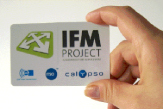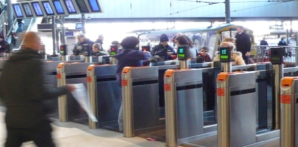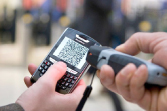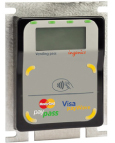A look into the European Commission latest guidelines for intelligent transport systems (ITS) deployment in urban areas, with specific reference to recent recommendations on deploying smart ticketing successfully
by Urban ITS Expert Group, European Commission
 Smart ticketing has been a topic in public transport for over a decade, but what does the term ‘smart’ mean in this context? When using this term, it generally means talking about new technologies and integration of services not directly linked to the basic functions of tickets. The main issues of smart ticketing are to propose complementary services to users in relation with their mobility; modify relationship between public transport user and his/her ticket as also between public transport operator and its tickets; improve overall efficiency and image of a public transport network as also the depth of data created through usage
Smart ticketing has been a topic in public transport for over a decade, but what does the term ‘smart’ mean in this context? When using this term, it generally means talking about new technologies and integration of services not directly linked to the basic functions of tickets. The main issues of smart ticketing are to propose complementary services to users in relation with their mobility; modify relationship between public transport user and his/her ticket as also between public transport operator and its tickets; improve overall efficiency and image of a public transport network as also the depth of data created through usage
Smart ticketing could permit to contribute to the overall improvement of the public transport network level of services, image, accessibility, with the main aim to facilitate and/or increase the use of public transport and so contribute to the overall political goal of developing a sustainable transport policy. Smart ticketing though is not necessarily about having one ticket for a journey but having one wallet for several tickets.
There are a number of potential implementation choices within the guidelines for smart ticketing:
- using a dedicated application
- based on the virtualization of tickets
- based on secure identity and back-office processing
Complex undertaking
Launching a smart ticketing capability can be a complex undertaking for a Public Transport Authority or Operator. It is critical that the options chosen meet the requirements and work towards integration at the local, national and cross-border level.
It requires transportation providers to build new systems and infrastructure, train staff and use public funds as sparingly as possible while providing satisfactory returns on investment. All this will be accompanied by keeping customers happy while educating them in new ways for planning their journey, buying their tickets and managing their journey.
Smart ticketing should not be seen as a simple replacement for traditional paper or magnetic ticketing. An important step is identifying which features and functionalities of smart ticketing can be adopted and how they will integrate with the customers’ wider mobility requirements. All this must be clear if the new system shall replace an existing distribution channel or be an alternative for the user. For a smart ticketing platform to add value for several years, and thus justify its initial investment, several key attributes are to be considered.
Distribution channels
Smart ticketing must allow passengers to receive travel information, plan their Journey and book their travel through a range of distribution and retail channels. This goal requires new systems that can accommodate the speed, power and flexibility necessary to handle multiple distribution channels for ticket sales onto the customer’s preferred smart ticketing media including contactless bankcards, mobile phones or specifically issued smartcards. They must also be able to pay for the chosen journey by a range of means including contactless payment and pre-loaded value.
These channels include mobile services, which allow passengers to book theirs travels on-the-go without having to pre-register, download a mobile application to a Near-Field Communications (NFC) enabled phone as well as mobile websites, and traditional PC-accessed sites.
 The adopted solution must support the entire customer service process, from journey planning, ticket ordering through to sales and customer service, customer billing and accounting. Once the passenger has requested tickets, these channels must coordinate and be interoperable with all existing transport operators’ ticketing systems to conform or complement their availability and pricing.
The adopted solution must support the entire customer service process, from journey planning, ticket ordering through to sales and customer service, customer billing and accounting. Once the passenger has requested tickets, these channels must coordinate and be interoperable with all existing transport operators’ ticketing systems to conform or complement their availability and pricing.
The system should be able to manage a wide range of ticket types, zones, and rates, including single-ride and multi-ride tickets with either immediate or triggered validity, as well as periodical passes (weekly, monthly, weekend, tourist, etc.), pay-as-you-go and multi-operator transit.
Regardless of the complexity or simplicity of the passenger’s request, the system must quickly and accurately calculate a price that is aligned with the transportation provider’s itinerary zone and tariff system or provide the customer with a post event billing service that is accurate and timely. The system must also allow passengers to pay for their tickets in the most convenient way possible, including for example contact or contactless credit/debit cards, via premium SMS, pre-paid wallet, direct debit, personal or employee invoices, etc…
Smart wallets
 Once the smart ticketing system secures payment, it should be able to deliver the ticket or authorize to enter the transit system and travel in a wide variety of ways. The customer should be able to choose whether they wish to pay with a purse or use a pre-purchased ticket. They do this by selecting the wallet (or wallets) they wish to use. This can hold their Identity, purse or tickets for their chosen journey; this can include Identity Cards / tags, Smart Cards and contactless Bank Cards, and NFC-enabled mobile phones.
Once the smart ticketing system secures payment, it should be able to deliver the ticket or authorize to enter the transit system and travel in a wide variety of ways. The customer should be able to choose whether they wish to pay with a purse or use a pre-purchased ticket. They do this by selecting the wallet (or wallets) they wish to use. This can hold their Identity, purse or tickets for their chosen journey; this can include Identity Cards / tags, Smart Cards and contactless Bank Cards, and NFC-enabled mobile phones.
Smart ticketing also embraces mobile tickets: alphanumeric codes (including conventional and 2-D barcodes) that are visually inspected or read by barcodes scanners or NFC-devices.
As with any system that will be used by large volumes of people on a daily basis, fraud and theft must be addressed whilst respecting the privacy of the customer. These features require a robust yet flexible technology platform capable of interfacing to a range of smart ticketing media and supporting applications and services that use a common set of interfaces which, in turn, allows new functionalities to be developed rapidly and cost-effectively. These features address not only the over-the-air communications with the smart ticket, but the security algorithms used, file structures for data, as well as the data itself.
 It also should feature built-in business and technical administration systems to monitor and manage capacity and performance continually, and connect with in-house business support systems such as billing, CRM, ERP, and travel planning systems. Such connectivity enables urban decision makers and transport operators to provide fast and seamless customer service, attain a holistic view of customers’ purchase behaviors, mobility requirements and service usage; and to use that information to improve billing and customer relationship management processes, and make better decisions regarding mode of travel, routes, schedules, fleets and fares.
It also should feature built-in business and technical administration systems to monitor and manage capacity and performance continually, and connect with in-house business support systems such as billing, CRM, ERP, and travel planning systems. Such connectivity enables urban decision makers and transport operators to provide fast and seamless customer service, attain a holistic view of customers’ purchase behaviors, mobility requirements and service usage; and to use that information to improve billing and customer relationship management processes, and make better decisions regarding mode of travel, routes, schedules, fleets and fares.
Business models
Existing Public Transport business models are limited, both geographically and modally. Public investments capacity is limited and public concern must be addressed as to why the public sector should lead the introduction of smart ticketing services whilst encouraging modal switching to lower carbon transport.
Smart ticketing is a global business and is, for the first time, being standards led. This allows off-the-shelf technology to be adopted with only limited local tailoring to reflect specific tariff structures and cross-modal opportunities. Suppliers are becoming multi-national and one way transportation providers can minimize the costs of providing the customer with the means for Smart Ticketing by taking advantage of the trusted service manager, in which a third party provides all the capabilities necessary to operate smart ticketing effectively — including the technology platform, business processes and people.
In addition to examining the need to invest in in-house infrastructure and capabilities, this model gives transportation providers the opportunity to link the amount that they spend to use a platform to the number of physical tickets they issue and the volume of passengers they support, thus eliminating the risk of paying for unneeded infrastructure and overhead.
A managed services arrangement can also provide flexibility, enabling a transportation provider to cost-effectively scale its smart ticketing operations as demand grows.
With these capabilities in place, transportation providers could be on their way to providing a smart ticketing service that coordinates and connects passengers, payment issues, technology, security, and Public Transport Operators across a multi-step process.
By using open international standards and specifications for smart ticketing, Public Transport Operators can access supply chains that are responsive, cheaper and address industry best practice. Outsourcing certain aspects of the supply chain will also contribute to an efficient and cost-effective service.
Integration
 Smart ticketing is just one step in the customer travel experience. From the initial journey planning through fare selection it must be possible for the customer to seamlessly access smart ticketing through their preferred distribution channel, using the identity, purse or tickets in their preferred wallet. This experience continues during the journey with access to timely real time information for the customer and traffic management for the operator.
Smart ticketing is just one step in the customer travel experience. From the initial journey planning through fare selection it must be possible for the customer to seamlessly access smart ticketing through their preferred distribution channel, using the identity, purse or tickets in their preferred wallet. This experience continues during the journey with access to timely real time information for the customer and traffic management for the operator.
This will also open up possibilities to collect statistical data that will contribute to the aims of Travel Information and Traffic Management. Always keeping privacy laws in mind, data must be shared between the key application areas.
For customers to understand the offer, the Public Transport industry must develop a consistent message in simple language that stresses the interoperability benefits, (the opportunity to adopt a lower carbon mobility profile with the consistent customer interface) and the removal of barriers, particularly relating to payment.
 Urban ITS decision makers should now systematically look for integration in such wider organizations to take benefit from the grouping of standard technical toolboxes as well as to insert their customer offer in a wider market. New marketing platforms will be opened and customer expectations must be managed. Public support through open customer engagement is essential for trust in the new technologies to be consistently delivered. Urban decision makers will have a significant role in developing marketing and modal integration strategies and the business processes in managing customers experience across modes and across borders.
Urban ITS decision makers should now systematically look for integration in such wider organizations to take benefit from the grouping of standard technical toolboxes as well as to insert their customer offer in a wider market. New marketing platforms will be opened and customer expectations must be managed. Public support through open customer engagement is essential for trust in the new technologies to be consistently delivered. Urban decision makers will have a significant role in developing marketing and modal integration strategies and the business processes in managing customers experience across modes and across borders.
A number of organizations in Germany (VdV KA), UK (ITSO), Netherlands (TLS) and France (AFIMB and Calypso) have shown within the research project IFM (7th Framework Program) that their individual Smart Ticketing solutions can co-reside on a single smartcard. There is strong support from the European Mobile Network Operators for such a solution and it parallels developments in the Single European Payments Area for contactless payment in a multi-application environment.
The benefits of an interoperable smart ticketing solution in Europe must be communicated. Campaigns must be aligned to a certain extent all over Europe. Naturally, some nations will need a different approach and communication. The message should be simple and easy to understand.
Legal issues
For Smart Ticketing to operate seamlessly across Europe there must be cooperation between urban and national transport providers, between public (national, regional and local) and private sector operators and suppliers, between journey planners and between retail and distribution channels. Urban and national transport decision makers must actively support the development and implementation of European and international specifications for smart ticketing to ensure mutual compatibility between all schemes.
It should however be noted that smart ticketing does not imply clearance and settlement between operators. The relationship may include interoperable schemes, which have settlement, but this is a commercial decision between operators (or has been mandated by Local Authorities). The prime relationship is with the media or wallet owner and the Trusted Service Manager who collectively manages the loading (and cancellation / deletion) of all the applications loaded within the wallet. This is typically the original smartcard issuer or the Mobile Network Operator in the case of an NFC-enabled phone.
Smart ticketing schemes need to cooperate, build consensus, share best practice and speak convincingly and with one voice to the legislature, to other industry bodies and to customers at large. This can only happen through the development and agreement on relevant standards and relationships, ways to verify compliance and provide all stakeholders with trust in the technology and systems used.
Data privacy
Collection of travel data can be challenging; the customer data stored in the system and in the customer medium are used for the benefit of customers to process payments, deliver entitlements and for a more user friendly interface. They are also used to mitigate the risks of misuse, manipulation or passing-on of the media to unauthorized persons that could incur commercial damage to the service operators. Protection of the customer’s privacy is an ethical requirement of confidentiality, un-linkability, un-observability and anonymity. A low level of protection not only could be punished as a violation of the law but would damage customer acceptance.
Smart ticketing privacy must defend the following principles:
- anonymous accessibility
- protection against risks of abusive use of personal data from applications in the media
- protection against risks of – abusive use of personal data by staff – abusive usage of abnormal events – abuse of direct marketing tools – hacking and criminal use of personal data in back-offices – uncontrolled dissemination of identity data.
Interoperability
For the customer to feel smart ticketing technology is bringing material improvement to the journey experience and encourage modal switching to lower carbon modes, interoperability between schemes is essential. Smart ticketing media issued to the customer by one transport operator should be compatible with other public transport in region, with other regions and with interurban/international systems.
Interoperability in smart ticketing implies removing the obstacles for the customer to switching transport modes. All ticketing needs for through journeys should be in one place and on their local transport media even outside their home network. There should be simple registration so the customer has a standardized machine interface and easy access in own language.
Currently there are a number of steps needed to reach full Europe-wide interoperability through mutual agreements between individual schemes to accept each other’s smart tickets:
Step 1: Look at your closest neighbors and identify the potential level of interoperability and technical compatibility between their own solutions and your own project.
Step 2: Bankcards / identities and smart tickets are issued to common EU smart specifications with schemes joining ticketing trust schemes.
Step 3: Common ticketing applications are defined that allow the customer to download the smart ticketing applications they require to their mobile phones, contactless bankcard or a smartcard.
Step 4: Provide a common web / mobile portal that allows access to a range of national and local smart ticketing applications and encourage common cross-border products and their retailing and distribution.
